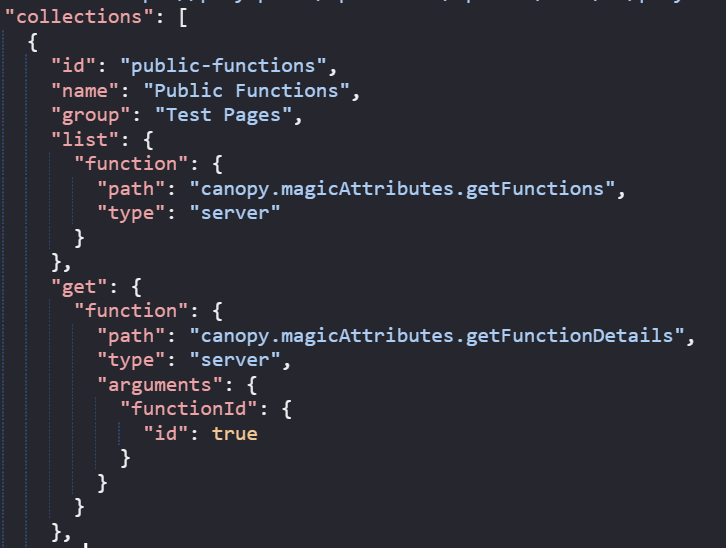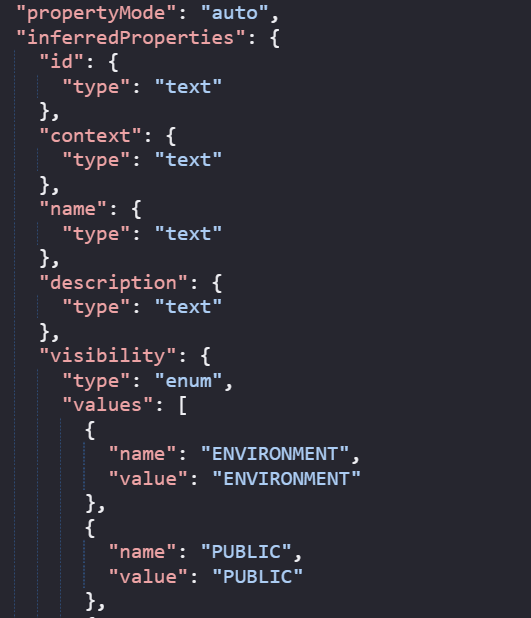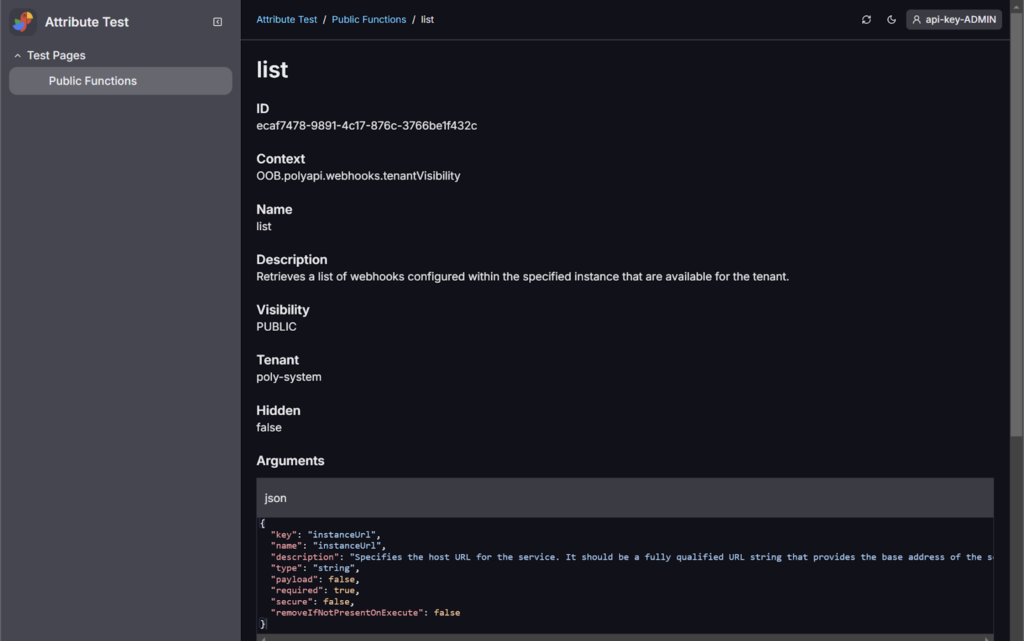Canopy, PolyAPI’s dynamic, function-driven UI service, is designed to transform how enterprises build internal applications. Positioned between API clients like Postman and custom UI development, Canopy caters to enterprises needing internal portals, management apps, and support tools, where ease of development, performance, and functional capability are prioritized over custom branding.
Being API-first, Canopy allows users to configure UI components through functions (APIs). With built-in behaviors focused on CRUD actions, users simply need to specify the function and its arguments per CRUD operation. Variables in Poly can be easily bound to these arguments, and functions and variables are addressable by context + name or ID, making integration smooth.
Simplifying UI Development
For example, a configuration for an app (which deals with public Poly functions as the content for example) with a list and details view might look like this:

Similarly, the implementation of the server functions in Poly might look like this:

The previously tedious task of manually defining response attributes—especially for complex responses—is now simplified with Canopy’s Magic Property Inference. This feature automatically interprets the API or server function response and argument types and generates a presentable UI, minimizing user input.
For instance, inferred properties might look like this:

The result? When the page is rendered, users will see:

If the functions returned different data—such as products or support tickets—the properties of those objects would be automatically rendered.
Why Magic Property Inference Matters
As enterprises increasingly need to develop composite applications—highly integrated apps built on top of existing systems—speed and efficiency are critical. These apps serve diverse use cases, from partner onboarding to managing exceptions in integrations or approving price updates. Fast development is key, but reducing the ongoing cost of maintenance is even more vital.
The Magic Property Inference capability addresses these challenges by:
- Speeding Up Development: Automating the most tedious part of attribute mapping cuts initial development time by over 50%.
- Effortless Updates: Adding or updating functions becomes straightforward, minimizing ongoing support effort and reduces the chance of the apps breaking.
- Simplifying Domain Knowledge Requirements: Developers don’t need in-depth knowledge of object models; they only need to select the functions they want to use and hide unnecessary fields.
Future Developer Experience Enhancements for Canopy Configuration
Looking ahead, Canopy will continue evolving to improve the DX even further:
- Overrides: Simple configuration overrides will control visibility across CRUD pages.
- Auto-Completion: When configuring functions, users will see auto-completion similar to coding environments, making function selection faster and more intuitive.
- Argument Selection: JSON elements for function arguments will be presented based on the configured function, enhancing clarity and ease of use.
- Action Selection: Users will be able to select actions in JSON configurations, with recommendations based on the collection name and selected action.
Learn more about what was recently released in Poly. Interested in learning more? Reach out to us at hello@polyapi.io.
